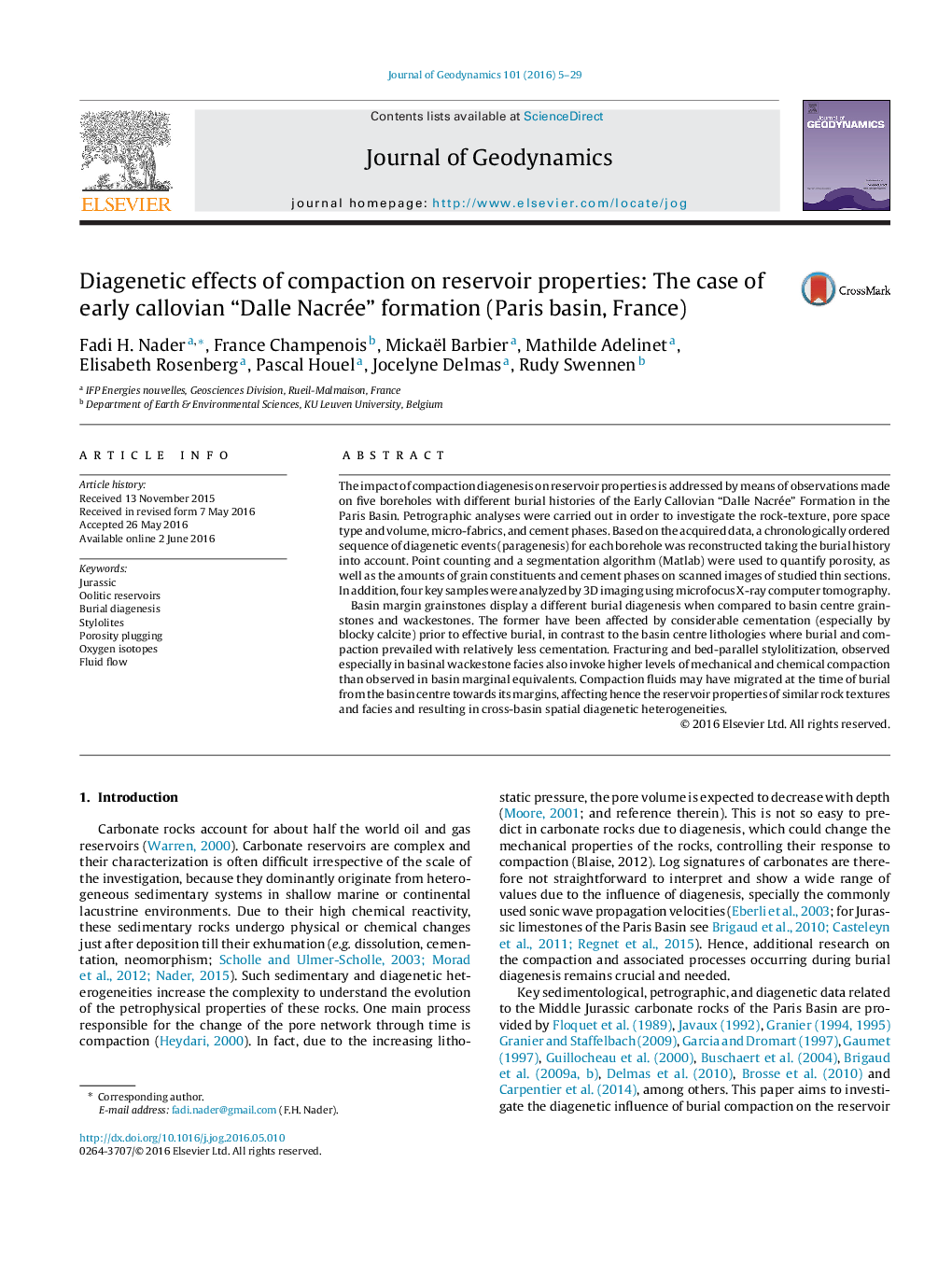| Article ID | Journal | Published Year | Pages | File Type |
|---|---|---|---|---|
| 4687914 | Journal of Geodynamics | 2016 | 25 Pages |
The impact of compaction diagenesis on reservoir properties is addressed by means of observations made on five boreholes with different burial histories of the Early Callovian “Dalle Nacrée” Formation in the Paris Basin. Petrographic analyses were carried out in order to investigate the rock-texture, pore space type and volume, micro-fabrics, and cement phases. Based on the acquired data, a chronologically ordered sequence of diagenetic events (paragenesis) for each borehole was reconstructed taking the burial history into account. Point counting and a segmentation algorithm (Matlab) were used to quantify porosity, as well as the amounts of grain constituents and cement phases on scanned images of studied thin sections. In addition, four key samples were analyzed by 3D imaging using microfocus X-ray computer tomography.Basin margin grainstones display a different burial diagenesis when compared to basin centre grainstones and wackestones. The former have been affected by considerable cementation (especially by blocky calcite) prior to effective burial, in contrast to the basin centre lithologies where burial and compaction prevailed with relatively less cementation. Fracturing and bed-parallel stylolitization, observed especially in basinal wackestone facies also invoke higher levels of mechanical and chemical compaction than observed in basin marginal equivalents. Compaction fluids may have migrated at the time of burial from the basin centre towards its margins, affecting hence the reservoir properties of similar rock textures and facies and resulting in cross-basin spatial diagenetic heterogeneities.
